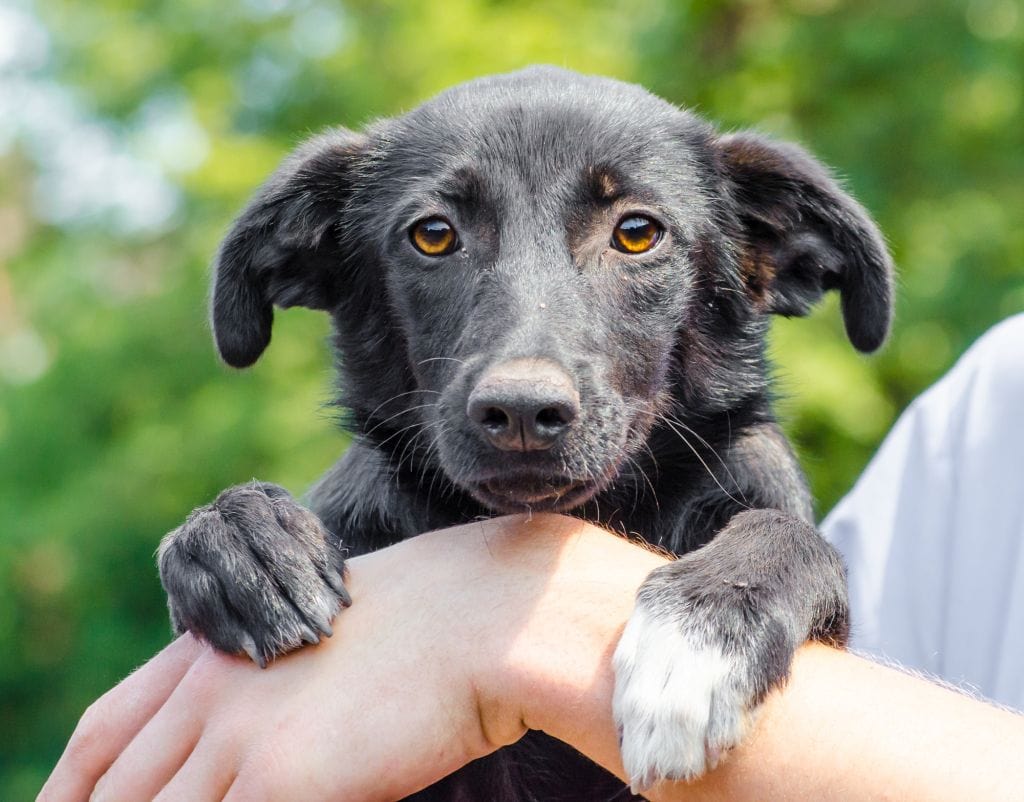When you are thinking about getting a puppy, you should remember that it’s a big decision. Although dogs are easier than most other pets, there are still many things that a puppy needs to grow up healthy and strong. The dog was the first animal to be domesticated by early humans, so it shouldn’t be too hard for you.
How to Prepare for a Puppy
So, let’s go over a step-by-step list showing all the things you need to consider before bringing a new puppy into your home.
Phase 1: Plan the Arrival and The Trip Home
Obviously, you will need a way to bring your puppy home. Most people use a small dog crate or something similar, but you might want to get a larger crate so that it doesn’t have to be replaced later.
You should try to plan your new pup’s arrival so that they can meet the whole family and have plenty of time to bond. This would mean not picking them up late at night after work or early in the morning before school (to give two examples). If you plan to use a daycare or dog sitter, it is also good to introduce them early.
Phase 2: Gather Supplies
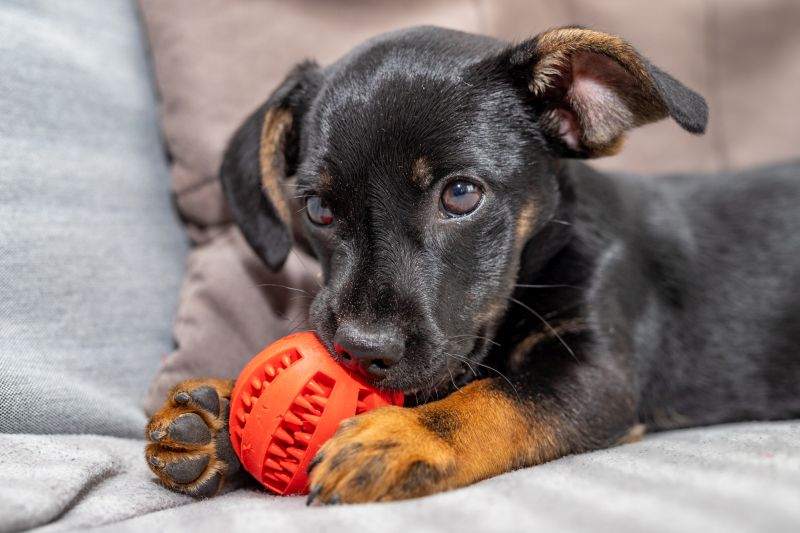
Now let’s look at some of the supplies that you are likely to need:
1. Food And Water Bowls
We would recommend stainless steel bowls here, as puppies tend to chew plastic ones. You also want to make sure that you get one that is short enough for your puppy to reach. Otherwise, they will end up standing in their food and water a lot. Obviously, the water bowl needs to be a little larger than the food bowl.
2. Healthy Dog Food
You shouldn’t just feed your puppy any kind of cheap dog food. Their bodies need plenty of nutrients to build themselves into healthy adult dogs. Puppy-specific brands are a good idea, but it isn’t always as simple as that. You need to get something with plenty of protein and other nutrients that is also relatively free of fillers like corn, wheat, and soy.
3. A Variety Of Treats
All dogs enjoy a treat from time to time, and treats are also essential for the training process. A dog’s training requires both positive and negative reinforcement, and treats are the easiest way to provide the positive end. Since all dogs have different tastes, you should let your puppy sample a wide variety and stick with the ones he seems to like the most.
4. Absorbent House-Training Pads
Puppy pads are also a good thing, as you will have to go through a painful housebreaking process. We would recommend that you place these puppy pads in a wide plastic tray, much like the ones in the bottoms of small kennels. That way, there will be a hard layer between the urine/fecal matter and your floor.
5. Poop Bags
You don’t need to waste money on specialized products here. You can just get some small garbage bags and set them aside for this purpose. You might want to take a magic marker and label the box “POOP BAGS” in big letters. That way, everyone in your house knows not to use them for anything else.
6. Collar And Tags
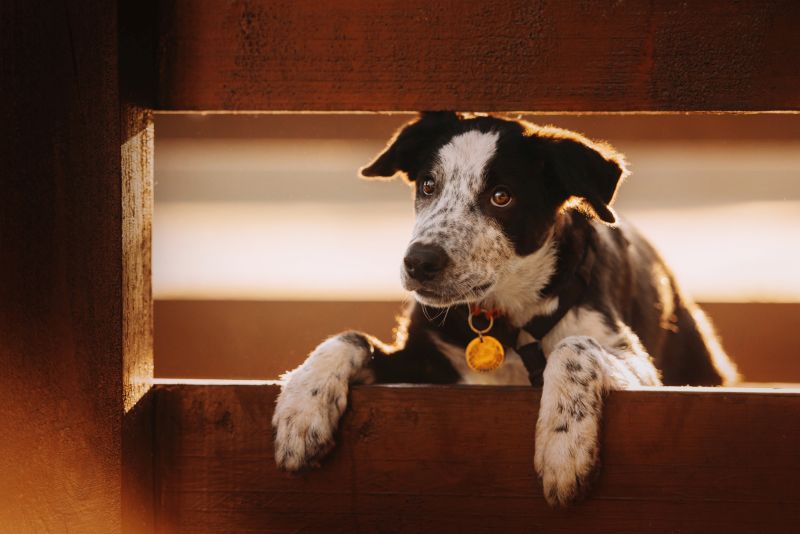
If your dog should happen to become lost, a collar and tags might be the only way for them to be returned. Without this, anyone who finds them may just assume that they are abandoned or stray. If they should happen to get picked up by the pound, those tags will separate the lucky ones from the unlucky ones, so make sure you get those tags as soon as possible.
You will need a small collar for your pup, of course, and you will have to replace it several times as they grow.
7. Harness And Leash
Not every dog needs a harness, but every dog needs a leash. Regular walks are a great way to give your dog some exercise while you interact with them. It’s a good bonding experience for both dog and owner, but you need to make sure that the collar/harness/leash combo that you choose does not choke your dog or constrict their blood flow.
8. Dog Crate
This is something you will need right from the beginning, and should probably be the first item that you buy. Don’t go with the tiniest crate there because these things can be a little expensive if you want a good one. It’s better to go ahead and buy something that will be large enough for an adult dog of that breed. Crates must be both safe and secure, so be picky about this one.
9. Dog Bed
There are many dog beds on the market, but most of them fall into one of two categories: Square mattress-style beds or circular beds with high walls. Both of these are good choices, although the square ones will probably fit into your pup’s kennel more easily.
10. Blanket
You can buy a good blanket for about ten dollars at your local department store, and your dog is probably a lot less picky than a human would be. Dog blankets are semi-disposable, so don’t break the bank on this one.
11. Toys
If you don’t want that puppy to chew on your furniture (and your fingers), you will have to give them an alternative. Chewing is good for a young dog’s teeth, and we would recommend using dental chews to maximize this benefit.
The thing to remember here is that any chew toy can present a potential choking hazard, so do your best to choose those without small, detachable pieces.
12. Grooming Equipment
Even if you have a short-haired dog, they will need to be combed and brushed from time to time. You will also need some dog shampoo, and we would recommend that you stick with a relatively natural formula. At the same time, dog shampoos with a huge amount of “fruity” ingredients can sometimes trigger allergies. When you try a new shampoo on your pup for the first time, you should test with a very small amount before giving them a full bath.
13. Stain And Odor Removers
Make no mistake about it: Your dog will urinate and defecate in the house. Hopefully, you will be able to quickly break that habit, but you should expect to deal with a certain amount of filth. There are quite a few pet odor removal products on the market, although many of them are just repackaged baking soda with some perfume added. If you are on a tight budget, baking soda is the way to go, as you can sprinkle it on the affected spot and vacuum it up 15-20 minutes later.
14. Protective Gear
Some puppies can be remarkably destructive, and you will need to be prepared for this possibility. You might want to use baby gates to limit their access to your home, and things like furniture covers and linoleum floors are also helpful when house training a pup.
Phase 3: Set House Rules
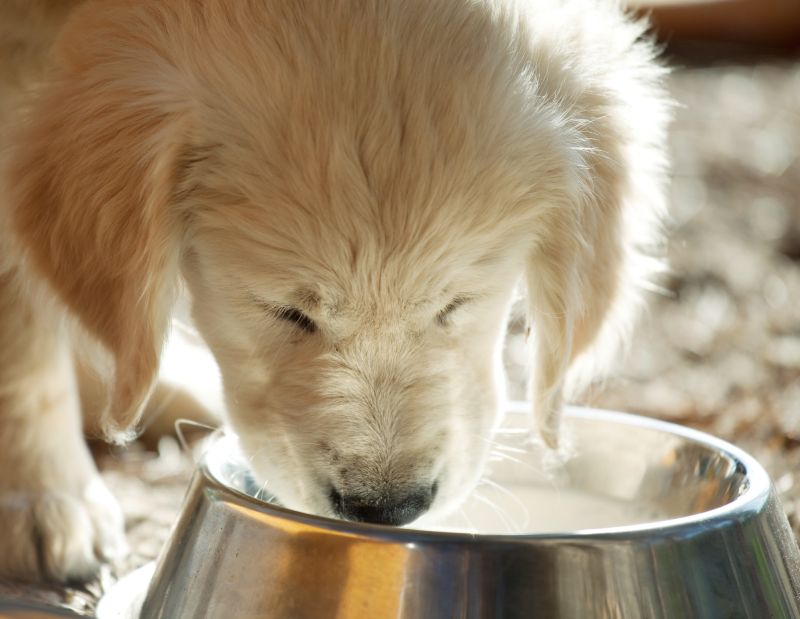
Discipline is essential to keep a puppy from growing into a burden. This doesn’t just mean discipline for the dog, but also for its owners. Before you bring the new puppy home, everyone in your home needs to understand how things will be done.
1. Set A Dog-Care Regimen
In most cases, a dog is owned by one particular individual, even if the entire family takes care of them. Obviously, if someone is designated as the owner, that person will be responsible for feeding them, walking them, cleaning up their messes, etc. If not, then you will need to clearly divide these responsibilities and ensure that everyone understands their duties.
2. Limit Where The Dog Can Go
As you probably know, some dogs are house dogs, and others are outside dogs. Some others are a little bit of both, so you will need to choose where your dog will spend most of their time. Their care and housing will need to be set up with that in mind. Your pup will need a “den,” even if it’s just a dark corner and a bed. Puppy gates and locked doors are also good ways to limit the dog’s access to sensitive areas.
Phase 4: Prepare Your Home
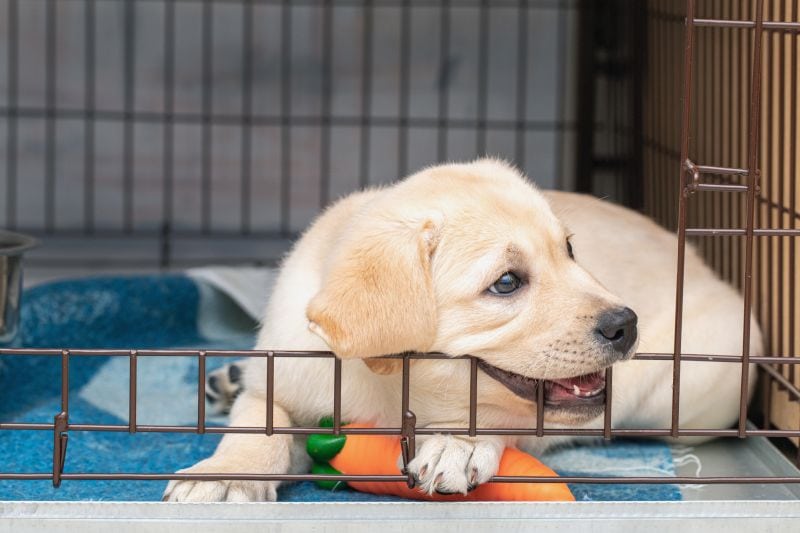
There are quite a few steps that you will need to take in order to ensure that your home is a good environment for your new pup. Safety is obviously the big issue here, but it isn’t the only one.
1. Sleeping Area
As we mentioned earlier, your dog should have a space of their own, and it doesn’t even need to be all that big. As long as there is enough room for their bed, their food/water bowls, and maybe a few toys, that should do the trick. In the wild, canines tend to inhabit small dens, so this is quite ordinary for them. In general, they prefer out-of-sight places for their sleeping areas.
2. Food Storage
Of course, your dog will do most of their eating in their den area, unless you choose to feed them elsewhere. Some people prefer to feed their dogs outside so that they don’t have to worry about spillage. Either way, you will need a good place to store dog food, and it must be out of your puppy’s reach. Otherwise, you might come home one day to find an empty food bag and a very fat little puppy. We would recommend a new trash can with a lid for this purpose, but plastic totes are also very popular dog food containers.
That brings us to the subject of human food. A puppy doesn’t know the difference between your food and theirs, so you will need to make sure that all human food is out of their reach. Some foods that we enjoy can be toxic to dogs, so take special care here.
3. Designated Potty Area
As we said before, you need to set aside a “potty spot.” We would recommend a corner in the back room, and we would recommend putting puppy pads on a wide plastic tray. This will not save you from all the nastiness that comes with owning a puppy, but it will definitely hold things to a minimum.
4. Secure Your Yard/Garden
Yards and gardens can present hazards for your puppy, as they tend to chew and eat random plants. Obviously, they will spit out anything that tastes bad, but not all poisons are that obvious.
You should make sure that you aren’t growing anything that is particularly poisonous, or remove those plants if they are there. Some ornamental plants are toxic, so do your research. Snakes might also be a concern, but a few mothballs dropped down their holes should do the trick.
5. Hazardous Substances
Now comes the meticulous part of the process. You will need to go through your home (one room at a time) and deal with any hazardous substances that may be there. These hazards can include things like:
- Cleaning products
- Laundry products
- Drain openers and chemicals
- Medicines
- Sharp objects
- Choking/trapping hazards
Objects like these will need to be placed in closets, locked cabinets, etc. Puppies are very curious and tend to put their mouths on everything, so it’s very important to keep all hazardous substances away from them.
Phase 5: When Puppy Arrives
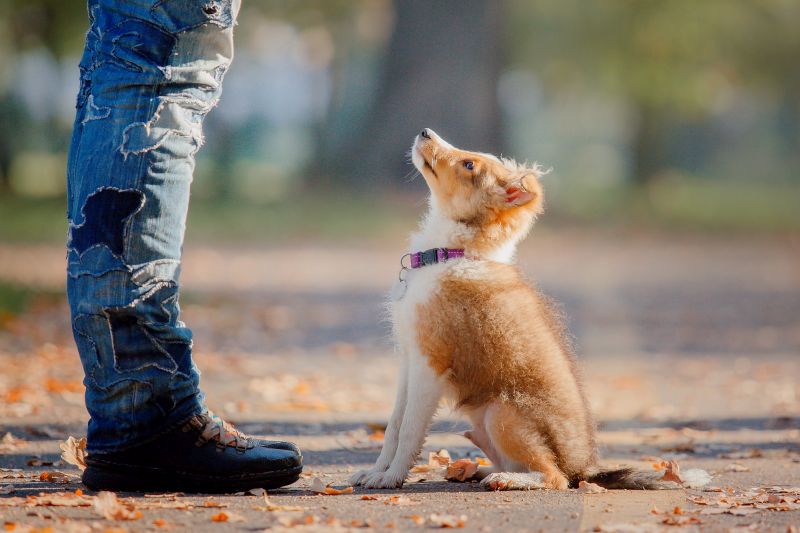
The preliminaries should all be covered by this point, and you should now be ready to pick up your new dog. Now, let’s discuss what you do once you get them home.
1. Set Up a Routine
You have already set up a care routine for your animal, so now you need to get that routine firmly established. A chart written on a dry-erase board can be a great way to keep track of whose turn it is to walk the dog, feed them, etc.
2. Start to Toilet Train Your Puppy
If your pup is freshly weaned, they are probably too young to be fully housetrained. You will need to wait until they are roughly six months old before dedicated training can begin. However, you can give them a good head start by encouraging them to use the puppy pads in the appropriate area. It is never too early to begin establishing good habits, but don’t expect them to pick it up right away.
If you find yourself with one of those difficult cases, crate training is probably your best bet. It is unpleasant because it involves leaving your dog in a crate for long periods of time. However, it is a time-tested and effective method for housebreaking even the most stubborn of dogs.
3. Meet Resident Pets
If you already have pets, you definitely want your pup to make friends with them. Even cats and dogs can get along if they become friends at a young age. For bully breeds, who are especially likely to attack cats, this is especially important. As for other dogs, it is no fun breaking up a fight between two dedicated canine combatants. The more they play and make friends at a young age, the less likely they are to fight over food, mates, etc.
4. Take Your Puppy to the Vet
Every new puppy should get at least one visit to the veterinarian. Proper shots are essential to help your puppy avoid diseases like parvovirus (a particularly common and lethal threat). In addition, flea treatments might be a good idea for some, but your vet will be able to give you a better idea of what your puppy requires.
5. Socialize Your Dog
Good socialization is something that can be trained almost from the moment of birth. Most people don’t want their dogs to bite unless they happen to be designated as guard dogs. However, even a guard dog must be well-controlled to do its job safely. To be more exact, it must know when to attack and when not to attack. Either way you look at it, getting your dog used to the company of people and other animals is a must.
6. Invest in Training
Professional trainers are always an option to consider, and there is no shame in doing so. Not all of us are cut out to be expert dog trainers, and not all dogs are so easy to train! Although this method might be outside your budget, it is another tool that you can employ.
7. Get Your Dog License
As we discussed earlier, you need to get those dog tags as soon as possible when getting a puppy. Puppies are more likely to run away than older dogs, so this should really be done on day one.
8. Get Your Dog Insured
As with a professional trainer, a pet insurance policy might be financially impractical for many dog owners. However, if you happen to have a particularly valuable dog, you would be foolish not to consider this step. These policies often cover veterinary bills, so it’s also a good idea for dogs with health issues.
Conclusion
Did you enjoy reading our list? We sincerely hope so, because we have tried to cover all the essentials for you. By applying the tips in this list, you can smoothly integrate a new puppy into your home. Obviously, you might need to modify our advice to suit your particular needs, but it should give you an excellent starting framework. If you enjoyed this article, please feel free to share it with others. Check back soon for more helpful advice like this!
